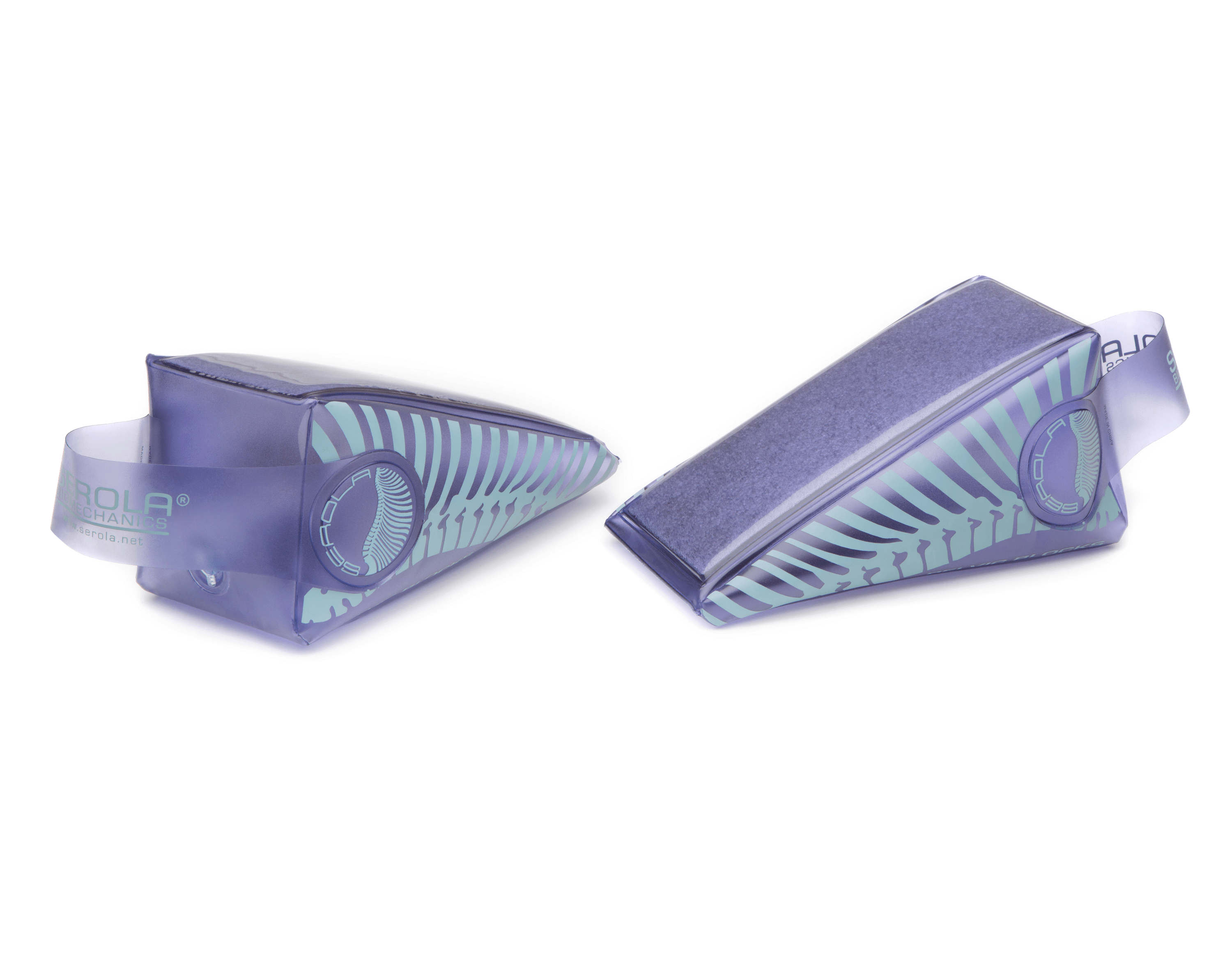Description
How the Serola Inflatable Pelvic Blocks Work
The Serola Inflatable Pelvic Blocks are used in executing the Sacral-Occipital-Technique, which is a chiropractic treatment used by many practicing chiropractors today to effectively correct sacroiliac dysfunction. Inflatable pelvic blocks sometimes referred to as pelvic sacral blocks have been made many times before, but they have functioned poorly because the ASIS causes a depression in the soft surface that simulates a bowl rather than a wedge. Serola Biomechanics has solved this problem by placing a foam-covered board into the top surface of the blocks. This board creates a firm surface that floats on a cushion of air.
As many doctors know, the original wooden blocks always placed importance on the carpet tacks on the bottom of the blocks. These tacks allowed the blocks to rock on a thick, foam-covered board so that they can adapt to the body’s respiratory motion and guide the pelvis into a correction.
The Serola Inflatable Pelvic Blocks apply this rocking principle more effectively. Because the board floats on a cushion of air, it rocks more freely and is better able to adjust to the body’s downward forces, even without a bottom board.
The flexibility of the board allows it to bow slightly as the pelvis presses down. This slight bowing creates a spring-like cushioning effect which, when combined with the foam board, provides superior comfort, especially for thin and sensitive patients. However, the board is firm enough to maintain the wedge shape and provide superior function.
The Serola Difference
• Inflatability equals portability. The ability to deflate means they are convenient and easy to use for travel
• Made from tough, yet comfortable urethane for trouble-free use
• Superior comfort and function compared to wood blocks
• Foam-covered board allows the blocks to adapt and guide the pelvis into correction better than any other product on the market












Reviews
There are no reviews yet.